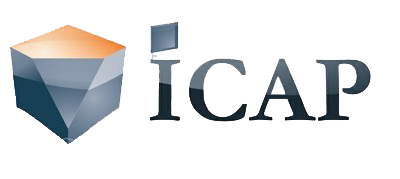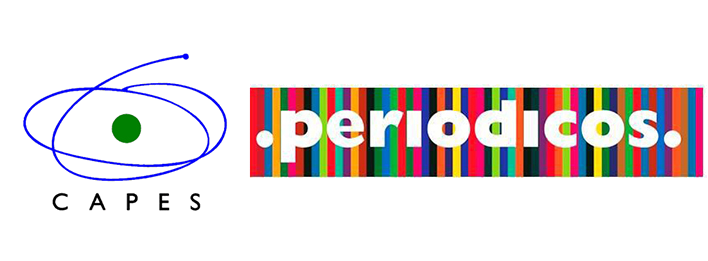Contribuições das atividades de marketing na cadeia de valor
Um estudo de caso em uma empresa de TI
DOI:
https://doi.org/10.29149/mtr.v4i1.5686Palavras-chave:
Marketing, Orientação para mercado, Cadeia de valor, Cultura organizacional, Pensamento sistêmicoResumo
De forma geral, as organizações mantêm o relacionamento com o ambiente externo como uma das principais responsabilidades das atividades de marketing. Empresas de tecnologia da informação possuem o conhecimento como principal recurso estratégico uma vez que é, através dele, que elas alcançam seus resultados. Diante desse cenário, questiona-se como essas atividades podem realizar contribuições estratégicas para as organizações a partir da disseminação desse conhecimento obtido. Dessa forma, o objetivo deste estudo é compreender como as atividades de marketing contribuem para as demais atividades da cadeia de valor de uma organização de tecnologia da informação, que possui o foco no cliente como parte da sua missão e como um dos seus principais valores institucionais, e compreender as contribuições destas atividades para a organização com base nas dimensões da teorias de orientação para mercado. A partir de uma pesquisa qualitativa, este estudo de caso utilizou como técnica de coleta de dados a entrevista semiestruturada e a análise de conteúdo como técnica de análise das informações coletadas. Constata-se um conjunto de contribuições para a organização, em todas as atividades da cadeia de valor, onde as atividades de marketing não apenas contribuem, mas também são beneficiadas pelo desenvolvimento das demais através da visão das atividades da cadeia de valor circular retroalimentada. Observa-se que, quanto maior relevância estratégica for atribuída às atividades de marketing, maior será a aproximação dessas empresas com as expectativas do mercado no qual estão inseridas.
Referências
Anderson, V., & Johnson, L. (1997). Systems thinking basics (pp. 1-14). Cambridge, MA: Pegasus Communications.
Artz P., van de Weerd I., Brinkkemper S., Fieggen J. (2010) Productization: Transforming from Developing Customer-Specific Software to Product Software. In: Tyrväinen P., Jansen S., Cusumano M.A. (eds) Software Business. ICSOB 2010. Lecture Notes in Business Information Processing, vol 51. Springer, Berlin, Heidelberg. doi: 10.1007/978-3-642-13633-7_8
Ayat, M., Sharifi, M., Sahibudin, S., & Ibrahim, S. (2009). Adoption factors and implementation steps of ITSM in the target. In Modelling & Simulation, 2009. AMS'09. Third Asia International Conference on (pp. 369-374). IEEE. doi: 10.1109/AMS.2009.114
Bardin, L. (1977). Análise de conteúdo. Lisboa: edições, 70, 225.
Berger, P. D., & Nasr, N. I. (1998). Customer lifetime value: Marketing models and applications. Journal of interactive marketing, 12(1), 17-30.
Blank, S. (2013). Why the lean start-up changes everything. Harvard business review, 91(5), 63-72.
CBOK, B. (2013). Guia para o Gerenciamento de Processos de Negócio Corpo Comum de Conhecimento. Association of Business Process Management Professionals. ABPMP BPM CBOK, 3.
Cohen, W. M., & Levinthal, D. A. (1990). Absorptive capacity: A new perspective on learning and innovation. Administrative science quarterly, 35(1), 128-152.
Felton, A. P. (1959). Making the marketing concept work. Harvard Business Review, 37(4), 55-65.
Fernandes, A. D. C. (2003). Scorecard Dinâmico: em direção à integração da Dinâmica de Sistemas com o Balanced Scorecard. XXIII Encontro Nacional de Engenharia de Produção, ENEGEP, Ouro Preto, Brasil. Disponível em: http://www.abepro.org.br/biblioteca/ENEGEP2003_TR0702_0847.pdf
Goldratt, E. M. (1997). Critical chain: A business novel. Great Barrington, MA: North River Press.
Gosling, J., & Mintzberg, H. (2003). As cinco mentes de um executivo. Harvard Business Review, 81, 40-49.
Homburg, C., Alavi, S., Rajab, T., & Wieseke, J. (2017). The contingent roles of R&D–sales versus R&D–marketing cooperation in new-product development of business-to-business firms. International Journal of Research in Marketing, 34(1), 212-230. doi: 10.1016/j.ijresmar.2016.05.008
Jaworski, B. J., & Kohli, A. K. (1993). Market orientation: antecedents and consequences. The Journal of marketing, 57(3), 53-70. doi: 10.1177/002224299305700304
Kohli, A. K., & Jaworski, B. J. (1990). Market orientation: the construct, research propositions, and managerial implications. Journal of Marketing, 54(2), 1-18. doi: 10.2307/1251866
McNaughton, B., Ray, P., & Lewis, L. (2010). Designing an evaluation framework for IT service management. Information & Management, 47(4), 219-225. doi: 10.1016/j.im.2010.02.003
Mintzberg, H., Ahlstrand, B., & Lampel, J. (2000). Safári de estratégias. Porto Alegre: Bookmann.
Morgan, R. M., & Hunt, S. D. (1994). The commitment-trust theory of relationship marketing. Journal of Marketing, 58(3), 20-38. doi: 10.1177/002224299405800302
Narver, J. C., & Slater, S. F. (1990). The effect of a market orientation on business profitability. The Journal of Marketing, 54(4), 20-35. doi: 10.1177/002224299005400403
Porter, M. E., & Millar, V. E. (1985). How information gives you competitive advantage, 63(4), 149-160.
Porter, M. E. (1989). Vantagem competitiva: criando e sustentando um desempenho superior (Vol. 511, pp. 1989-13). Rio de Janeiro: Campus.
Senge, Peter. M. (2018). A quinta disciplina: a arte e prática da organização que aprende. Editora Best Seller.
Smith, W. K., Lewis, M. W., Jarzabkowski, P., & Langley, A. (Eds.). (2017). The Oxford handbook of organizational paradox. Oxford University Press.
Zahra, S. A., & George, G. (2002). Absorptive capacity: A review, reconceptualization, and extension. Academy of management review, 27(2), 185-203. doi: 10.5465/amr.2002.6587995
Downloads
Publicado
Como Citar
Edição
Seção
Licença
Autores que publicam nesta revista concordam com os seguintes termos:
- Autores mantém os direitos autorais e concedem à revista, sem ônus para a mesma, o direito de primeira publicação, com o trabalho simultaneamente licenciado sob a Licença Creative Commons Attribution que permite o compartilhamento do trabalho com reconhecimento da autoria e publicação inicial nesta revista
- Autores têm autorização para assumir contratos adicionais separadamente, para distribuição não-exclusiva da versão do trabalho publicada nesta revista (ex.: publicar em repositório institucional ou como capítulo de livro), com reconhecimento de autoria e publicação inicial nesta revista.
- Autores assumem exclusiva responsabilidade pelas suas opiniões emitidas nos trabalhos publicados nesta revista
















